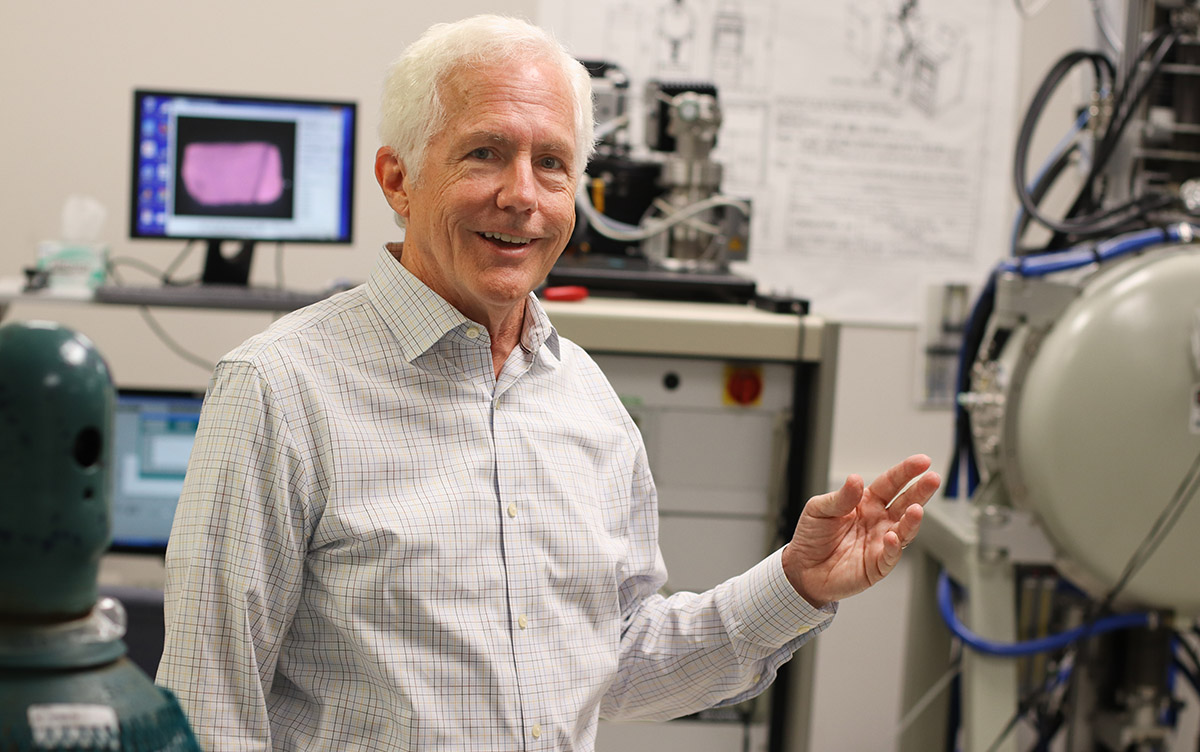$2.25 Million Grant Launches New Chapter for UT Materials Research
Since its start in 2006, UT’s Scintillation Materials Research Center (SMRC) has become a world leader in synthesizing novel scintillators—materials that visibly glow in the presence of radiation.
This year, with a $2.25 million grant from the US Department of Homeland Security (DHS), SMRC Director Chuck Melcher is expanding the spotlight.
“I think the general expertise that we have developed over the years is something that DHS wants to take advantage of,” said Melcher. “They have encouraged us to get involved with semiconductors.”
A conductor, like copper wire, will swiftly transfer (or “conduct”) an electrical charge of any strength. In contrast, a semiconductor will only conduct electricity if it absorbs energy above a certain threshold—for example, by intercepting a photon released by a radioactive material.
“The key word is ‘nonproliferation,’” Melcher said, referring to the goal of reducing the spread of nuclear weapons technology. “Lots of governments, including ours, are always on the lookout for suspicious movements of radioactive materials. To catch that, you have to have some kind of sensitive detector of the radiation that’s being emitted.”
Unfortunately, the semiconductor materials currently available to DHS are expensive, time consuming, and difficult to produce. Though the materials can be meters tall—like the portals trucks drive through at border stations—many are single crystals grown individually from vats of molten liquid.
Under this new grant, Melcher and his co-investigators, Research Assistant Professor Luis Stand from nuclear engineering and Associate Professor Mariya Zhuravleva from materials science and engineering, will work with researchers at Radiation Monitoring Devices, Inc., to develop more efficient and scalable semiconductors.
The project will focus on polycrystalline materials, which can be created in bulk as powders, then heated and compressed to form solids of various dimensions.
First, the team will comb through databases of known polycrystalline materials and their properties, such as physical traits, crystal structure, elemental makeup, and density. The most promising materials will be created in the lab on a small scale, then tested for radiation sensitivity, durability, and stability.
While Melcher, Stand, and Zhuravleva are spearheading the research, most of the database searching, materials synthesis, and testing will be performed by undergraduate and graduate students from various departments at UT.
“This project is part of the Academic Research Initiative within the DHS,” said Melcher. “That part of the agency is specifically oriented towards developing students who would stay in this general field after they get their degrees and continue to contribute to DHS research.”
In addition to generating new materials and new specialists, Melcher looks forward to expanding the capabilities and impacts of the SMRC.
“If we can use our expertise to fabricate some different semiconductors, we hope to significantly lower the cost of production,” Melcher said. “That would increase the availability and practicality of these materials in more places, significantly advancing the DHS’ mission of nuclear security.”
